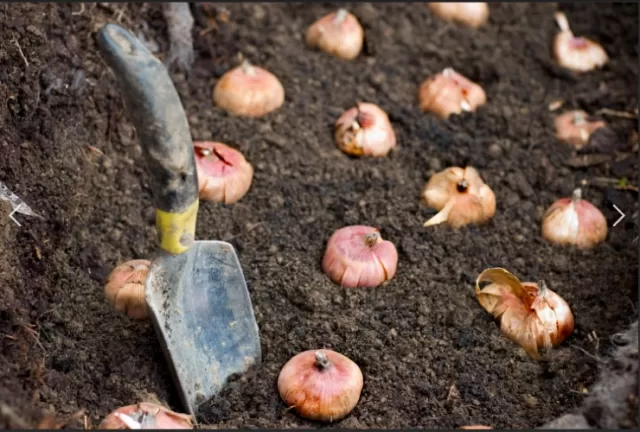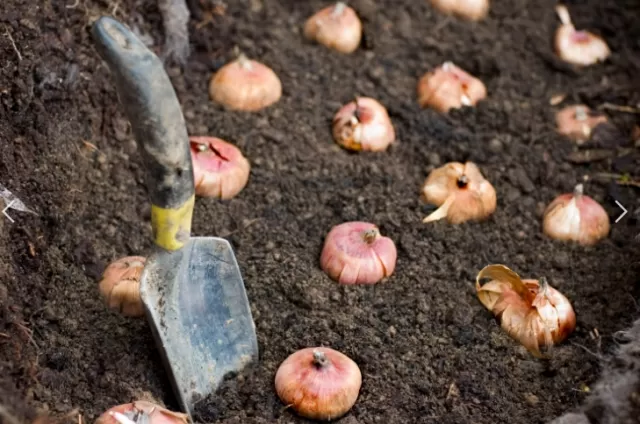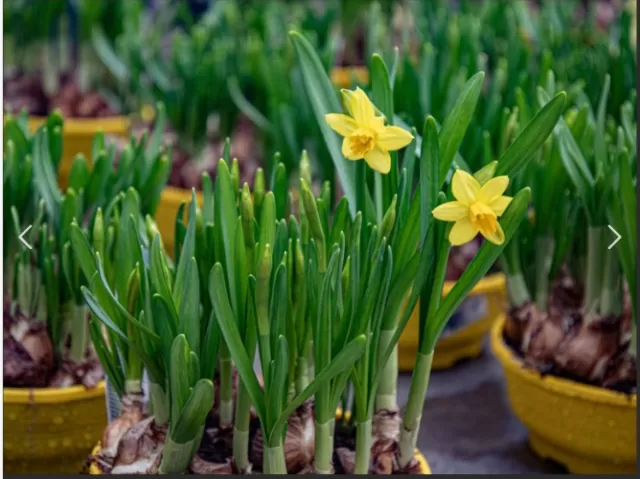Winter Flower Bulb Planting. The enchantment of flowering bulbs often conjures images of vibrant spring landscapes, but the groundwork for their beauty commences during the quiet seasons of fall and winter. As late November and early December roll around, many bulbs still find their way into the garden, depending on your zone. However, if outdoor planting is no longer feasible, the winter months provide an opportunity to cultivate these blooms indoors, transitioning them to the garden after their indoor spectacle.
Nurturing Spring Bulbs: Embracing the Chill for Vibrant Blooms

To coax the best out of your spring flowering bulbs, providing them with a requisite cold period and a touch of moisture is key.
According to expert advice from Montgomery, the most straightforward approach involves allowing Mother Nature to work her magic by placing the pots outdoors. This natural setting allows the bulbs to establish roots, preparing them for the spectacular bloom that awaits.
Insulating the pots with a layer of leaves or mulch not only helps maintain an optimal temperature but also adds an extra layer of protection.
For those opting for indoor chilling, a cold garage, basement, or refrigerator can serve as a controlled environment.
However, when using the refrigerator, it’s essential to heed a crucial caveat shared by Montgomery. While chilling bulbs, it’s advisable to keep them away from fruits in the refrigerator.
Fruits release ethylene, which can interfere with the chilling process and compromise the bulbs’ ability to thrive.
Additionally, when outdoor chilling is the chosen method, safeguarding the bulbs from potential rodent mischief becomes paramount.
Montgomery suggests using chicken wire to cover the pots, ensuring that the bulbs remain undisturbed and protected.
By understanding and embracing the need for a cold period, coupled with thoughtful moisture management, you set the stage for a vibrant and flourishing display of spring blooms.
Whether under the open sky or within the controlled confines of your indoor spaces, giving bulbs the chill they need becomes a nurturing gesture towards a garden bursting with life and color.
Caring for Bulbs: A Winter Monitoring Ritual

As your bulbs gracefully embrace their cold period, it’s essential to remain a vigilant caretaker.
Montgomery, the gardening expert, suggests a mindful approach to ensure optimal conditions for your upcoming blooms. Regularly check the soil moisture every few weeks during this chilly phase, taking note of any fluctuations that may impact the bulbs’ well-being.
As the cold period nears its conclusion, shift your attention to a more telling sign of blooming potential.
Instead of focusing solely on sprouts, Montgomery advises observing the bulb’s ability to establish roots. This root development serves as a more reliable indicator of future blooms than the appearance of initial sprouts.
The roots signify that the bulb is not just surviving but actively preparing for its spectacular display.
In this winter monitoring ritual, your role as a gardener becomes that of a careful observer and facilitator.
By attuning yourself to the subtle cues provided by the soil moisture and the root development, you empower your bulbs to thrive when the time for their grand entrance arrives. This mindful caretaking ensures that the cold period becomes a crucial phase of preparation, setting the stage for a breathtaking bloom when spring unfolds its magic.
Transitioning Bulbs: A Delicate Move from Cold to Bloom

As the bulbs conclude their essential cold period, it’s time to orchestrate a graceful transition.
Montgomery, with her gardening wisdom, recommends bringing the chilled bulbs indoors, ushering them into a new phase of their journey. Find a cool, sunlit spot within your home to accommodate these precious blooms as they prepare to unfurl their beauty.
Once indoors, anticipate the magic to unfold.
Montgomery notes that flowering typically occurs approximately two to four weeks after the bulbs emerge from their cold slumber. It’s a breathtaking moment as the indoor environment coaxes the blossoms to emerge, bringing a touch of spring into your living space.
However, it’s wise to bear in mind that the indoor bloom may be more fleeting compared to the outdoor display.
As Montgomery points out, the duration of flowering indoors might be shorter. But fear not, for even after the indoor spectacle concludes, there’s an opportunity for a seamless transition back to the outdoors.
Consider planting the smaller bulbs in your garden once they’ve finished their indoor bloom, allowing them to thrive and delight in the open air, promising a cycle of beauty that extends beyond the confines of your home.
*The information is for reference only.